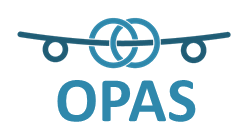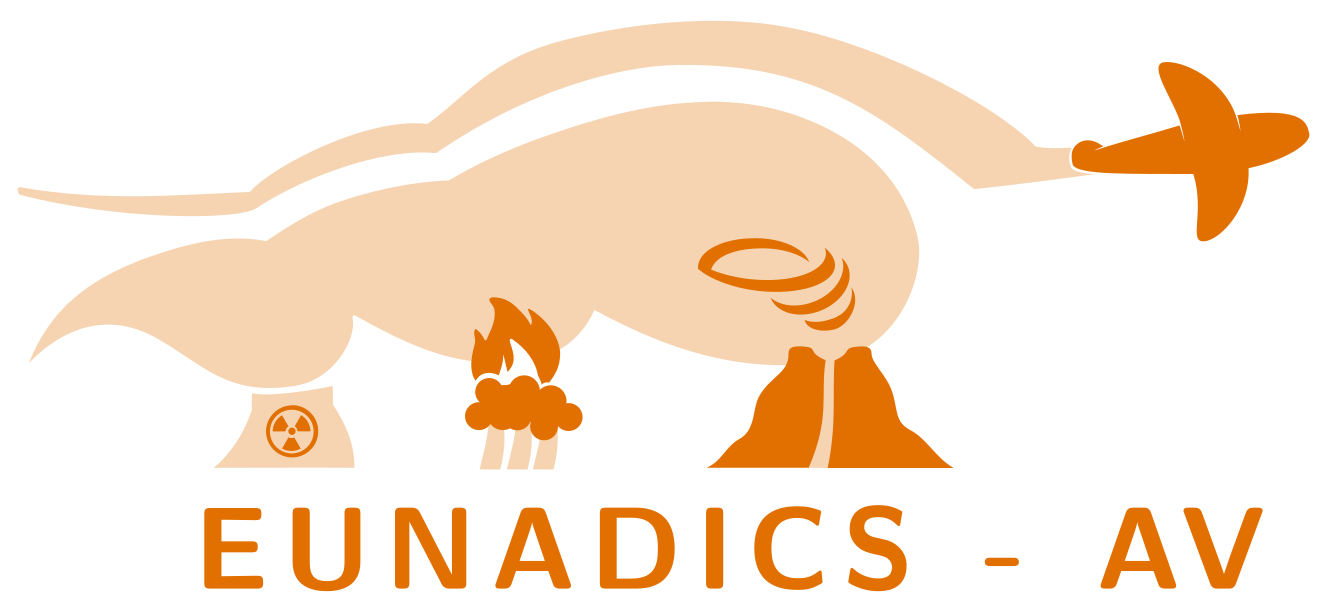The main goal of the Engage KTN OPAS project (Operational alert Products for ATM via SWIM) is to contribute with a new product to an existing early warning system, so called SACS (Support to Aviation Control System). The new alert product targeted by OPAS project is the plume height of sulphur dioxide (SO2) emitted during a volcanic eruption. SO2 is a proxy for the volcanic ash height (which is notoriously difficult to measure). The instrument used to measure the SO2 is TROPOMI on board Sentinel-5 Precursor.
Financier:
Engage KTN - SESAR JU
Final Technical Report
OPAS Engage - KTN
|

|
From October 2016, the development of the SACS system is part of the 3-years H2020 EUNADICS-AV project. The near-real-time monitoring and detection capability of EUNADICS-AV will be improved with new datasets and expanded to other airborne hazards than volcanic eruptions. EUNADICS-AV Project is funded by the European Union's Horizon 2020 research programme for Societal challenges - smart, green and integrated transport under grant agreement no. 723986.
Financier:
European Commission's Horizon 2020 research programme (EC H2020)
|

|
SACS was continued as a project on its own after PROMOTE and TEMIS
(2009-2014).
Financier:
European Space Agency (ESA)
|

|
|
Activities of SACS was closely related to the
VAST
project (2011-2015).
The project VAST (Volcanic Ash Strategic-initiative Team) aims to demonstrate
the suitability of Earth Observation (EO) data for the monitoring and the forecasting
of the volcanic plume of ash, and to improve on the existing monitoring and
forecasting services for ash transport and its interaction with aviation.
Financier:
European Space Agency (ESA)
|

|
SACS activies was linked to the SMASH project
(2012-2014).
SMASH (Study on an end-to-end system for volcanic ash plume monitoring and prediction) is funded by the ESA General Studies Programme and has main objectives to develop and validate new algorithms that implement polar orbiting satellite remote sensing data for volcanic source term characterisation, and for the quantitative retrieval of volcanic ash and SO2 plumes. Moreover, the project will define an optimal end-to-end system for volcanic ash monitoring and prediction for Europe, based on the existing remote sensing infrastructure.
Financier:
European Space Agency (ESA)
|

|
SACS activies was linked to the
MACC (II/III) project 2014-2015.
Financier:
European Commission (EC)
|

|
SACS activies was linked to the
EVOSS
project
(2010-2013).
The overall goal of EVOSS is to develop and demonstrate a pre-operational portfolio of GMES-Copernicus Downstream Services, based on Earth Observation data and products, to monitor volcanic hazards at a global scale.
Financier:
European Commission
(EC)
|

|
SACS has become operational as one of the Services of Stage II of the
PROMOTE project
(2006-2009).
Financier:
European Space Agency (ESA)
|

|
Parts of SACS were initiated under the
TEMIS project
(2002-2009).
Financier:
European Space Agency (ESA)
|

|
|
Activities of SACS was closely related to the
SAVAA
project (2008-2012).
SAVAA will set up a demonstration system that will be able to ingest
satellite data and meteorological wind fields, compute the injection
height profile of volcanic emissions to produce a range of analysis
fields of volcanic cloud.
Financier:
European Space Agency (ESA)
|

|
|
Part of the SO2 data from SACS and dedicated maps are delivered to the
GlobVolcano
project (2007-2010)
GlobVolcano Project aims at demonstrating EO based integrated services to
support the Volcanological Observatories and other mandate users in their
monitoring activities. EO based information services will be related to the
responsibility areas of user organisations and particular emphasis will be
addressed to prevention and early warning.
|

|
|
Part of the SO2 data from SACS is going to used for validation
tasks within the
NOVAC project
(2005-2010).
The main objective of NOVAC is to establish a network for measurements of
the emissions of gases -- in particular SO2 and BrO -- and aerosols by
volcanoes, and to use the data from this network for risk assessment and
volcanological research, both locally and on a regional and global scale.
|

|
|
Part of the SO2 data from SACS is used for validation tasks in the
AMFIC
project (2007-2009).
AMFIC addresses atmospheric environmental monitoring over China. The aim is
to develop an integrated information system for monitoring and forecasting
tropospheric pollutants over China, using satellite and in situ air quality
measurements and modelling.
|

|